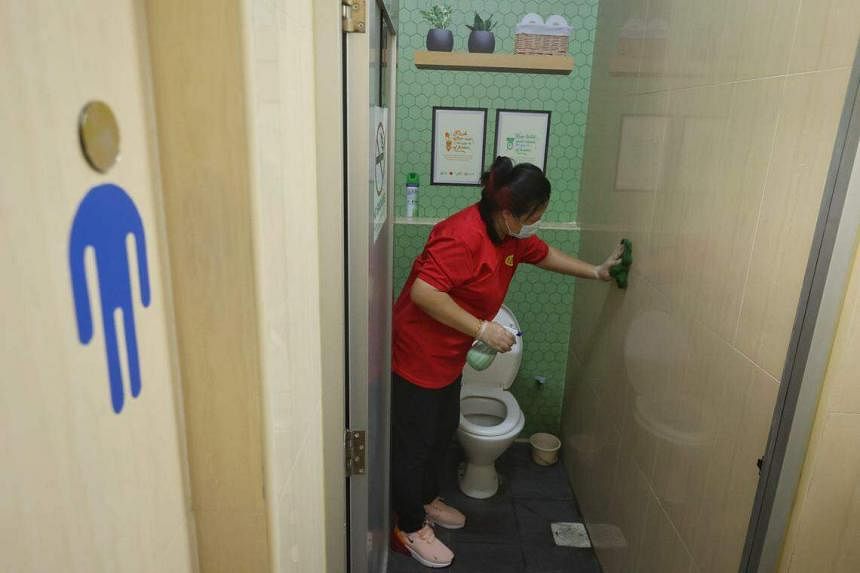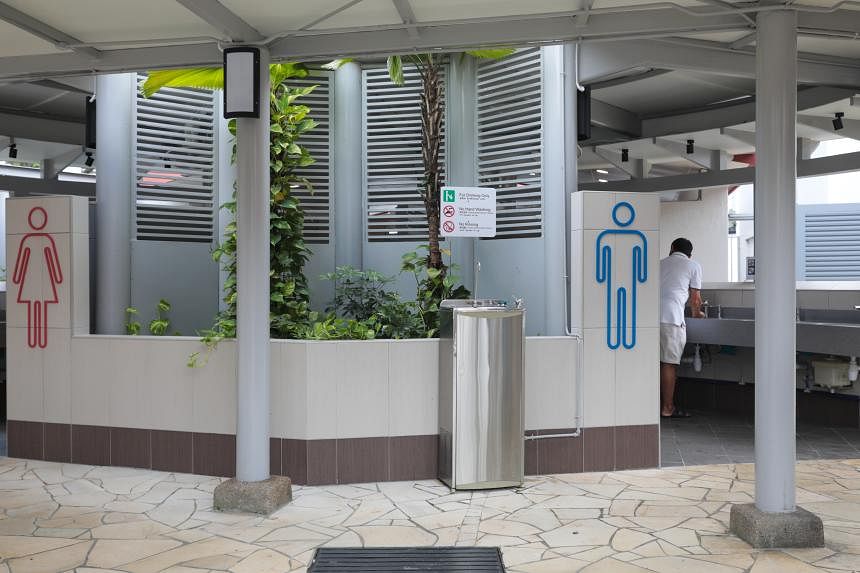SINGAPORE – More than 66 per cent of Singaporeans said public toilets in hawker centres and coffee shops either remain as dirty as they were three years ago, when a survey was last conducted, or “have become much dirtier”.
This is according to an islandwide study conducted by the Singapore Management University (SMU) in 2023.
Additionally, about 60 per cent of respondents also said that efforts in cleaning up toilets in hawker centres and coffee shops ranged from mostly ineffective to completely ineffective; only 6 per cent of Singaporeans were optimistic about the efficacy of clean toilet campaigns.
According to the survey, the cleanest public toilets in hawker centres and coffee shops were found in Marina South, followed by Outram and Boon Lay. Marina South also ranked first in the previous two surveys conducted in 2020 and 2016.
The dirtiest toilets were in Pioneer, Ubi, and the area around the Singapore River. Tuas and Singapore River were voted the worst in 2020 and in 2016, respectively.
Titled Waterloo, the nationwide study conducted from August to September 2023 interviewed over 9,400 Singaporeans on their perception of public toilets at hawker centres and coffee shops.
More than 450 of the interviewees were workers at these coffee shops and hawker centres, while the rest were customers.
Public perception was measured using the Human Perception of Toilet Cleanliness (TCI) Index, where respondents rated their perception of public toilets on a scale of zero to 100: 100 represents the most positive perception of toilet cleanliness, and zero the most negative.
The survey found that the perception of coffee shop toilets measured at 46.84 on the TCI, compared with a more positive perception of hawker centre toilets at 65.60. In 2020, the perception of coffee shop toilets measured at 46.35, and hawker centres at 58.23.
Overall, 66.74 per cent of respondents said the cleanliness level of toilets in local hawker centres and coffee shops had stayed “just as dirty” or had become “much dirtier”, with only 22.18 per cent believing that cleanliness levels had improved.
As for the cleanliness levels in different types of toilets, those for the physically disabled were rated the cleanest at 54.28, followed by women’s toilets at 52.33, and men’s toilets at 49.73.
The dirtiest types of toilets were unisex, or shared toilets, rated at 36.14, a decline from 42.89 in 2020. The survey added that a large majority of these unisex toilets were located in coffee shops.

Toilets that were nearer to cooking facilities also tended to be dirtier than those farther away, with a difference of 15 points on the cleanliness scale. This correlation was also observed in 2020 and 2016.
Overall, the survey also found that men had better perceptions of public toilets (57.20) than women (42.02). Respondents who worked at the hawker centres and coffee shops also had better perceptions of these toilets than customers.
Some 91.31 per cent of customers said toilets in hawker centres and coffee shops needed “major overhauling”, rating them as “dirty”. In contrast, 70 per cent of employees said that the degree of improvement needed was “moderate”.
But 70 per cent of both customers and workers said they would not use the toilets in these places for passing motion, and 75 per cent of respondents said they would use the toilets in these areas only for urinating.
The survey was conducted by Ms Rosie Ching, principal lecturer of statistics at SMU, and 170 undergraduates, who were part of her Introductory Statistics X course.
They visited more than 2,200 public toilets at over 100 hawker centres and over 950 coffee shops around Singapore, and evaluated them on more than 100 variables including toilet bowl cleanliness, and floor dryness.
“Having a clean toilet to use is a fundamental human right,” said Ms Ching, adding that this study revealed the dirty state of many toilets, most of which are in proximity to kitchens and food-handling areas.
She added: “Food sanitation and toilet hygiene are strongly correlated.
“We hope that these findings will spur decisive and collective action to improve the state of public toilet hygiene and raise the level of cleanliness for food handlers at these premises.”


